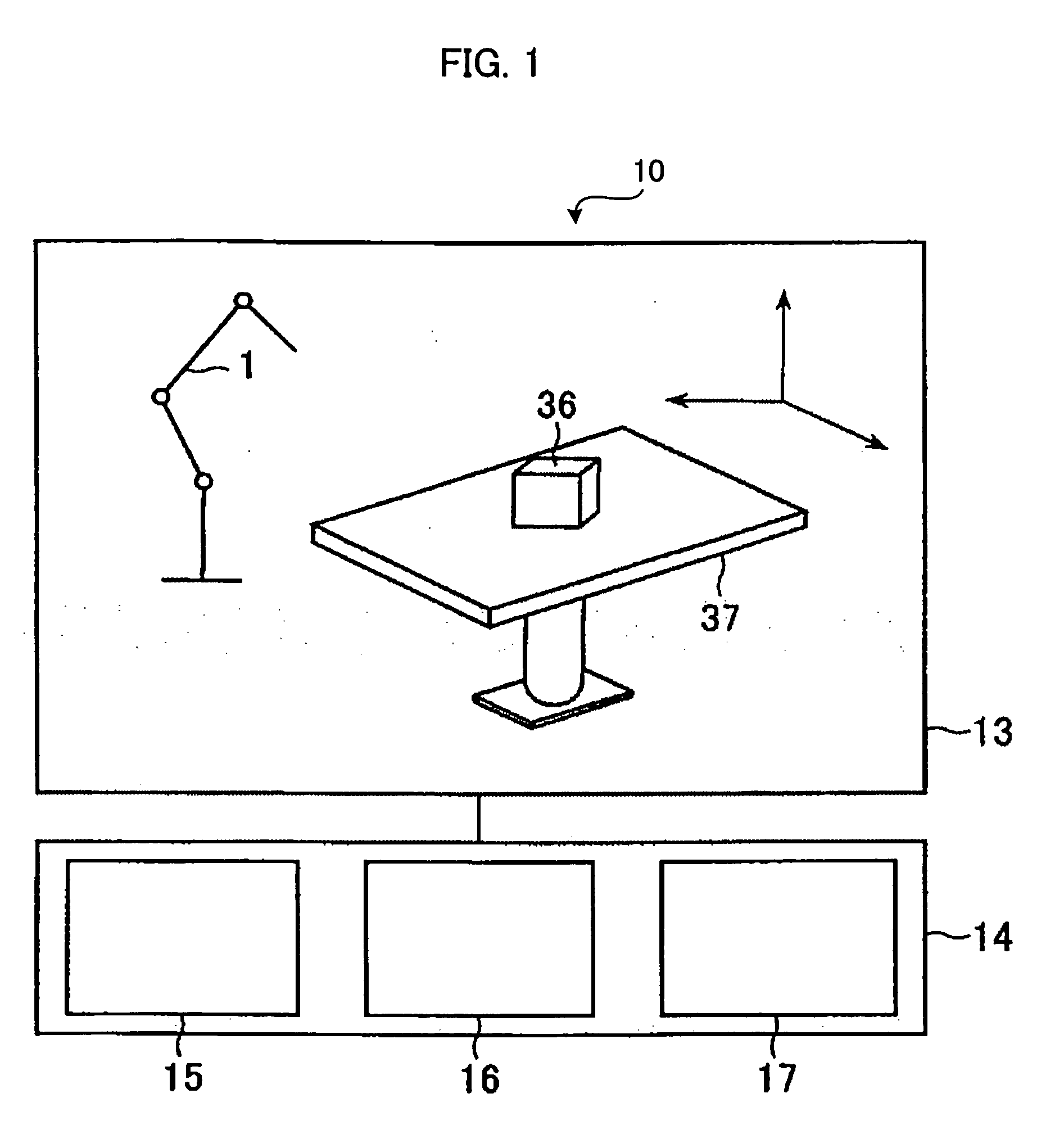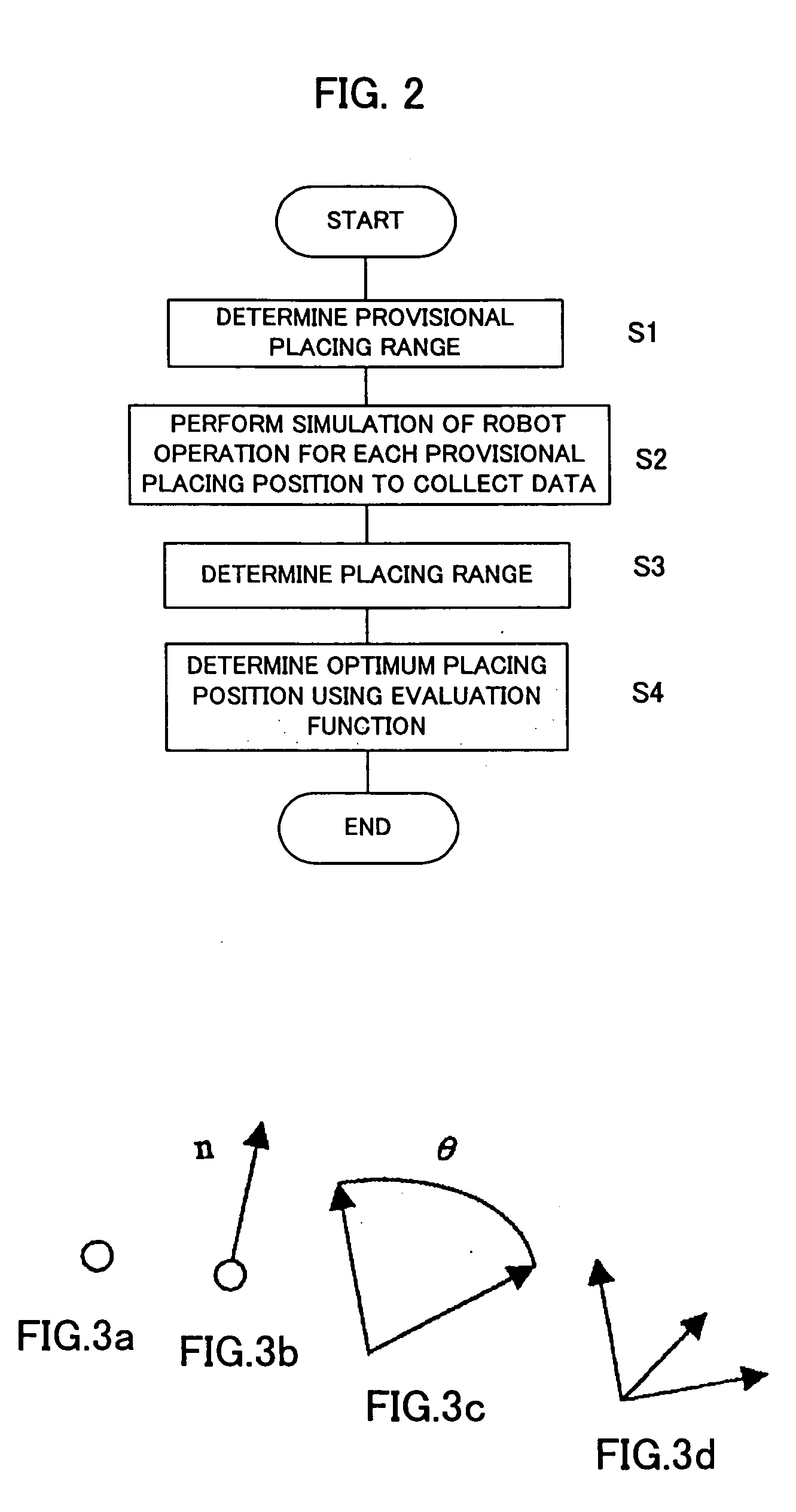Robot off-line simulation apparatus
a simulation apparatus and robot technology, applied in computer control, program control, instruments, etc., can solve the problems of inability to operate at the determined placing position, difficult to make the on-screen positional relationship between the robot and the peripheral device perfectly correspond, and inability to optimize the determined positioning position. to achieve the effect of reducing cost and tim
- Summary
- Abstract
- Description
- Claims
- Application Information
AI Technical Summary
Benefits of technology
Problems solved by technology
Method used
Image
Examples
Embodiment Construction
FIG. 1 is a block diagram showing an arrangement of parts of a robot off-line simulation apparatus 10 according to an embodiment of the invention. As shown in FIG. 1, the robot off-line simulation apparatus 10 as a whole comprises a display part with a screen 13 and a main part 14. The main part 14 includes an animation arithmetic display unit 15, a data storage unit 16, a robot operation / placement arithmetic unit 17.
Although not shown in the figure, a keyboard, a mouse and the like are attached to perform editing, correcting, feeding, etc. of program data, parameter data, instructions, etc. for these parts of the robot off-line simulation apparatus through manual operation, when necessary. Further, a main CPU not shown in the figure performs overall control on the individual parts of the simulation apparatus according to system programs, etc. stored in the data storage unit 16. Further, the simulation apparatus is arranged to be able to send and receive data to and from a CAD syst...
PUM
 Login to View More
Login to View More Abstract
Description
Claims
Application Information
 Login to View More
Login to View More - R&D
- Intellectual Property
- Life Sciences
- Materials
- Tech Scout
- Unparalleled Data Quality
- Higher Quality Content
- 60% Fewer Hallucinations
Browse by: Latest US Patents, China's latest patents, Technical Efficacy Thesaurus, Application Domain, Technology Topic, Popular Technical Reports.
© 2025 PatSnap. All rights reserved.Legal|Privacy policy|Modern Slavery Act Transparency Statement|Sitemap|About US| Contact US: help@patsnap.com



